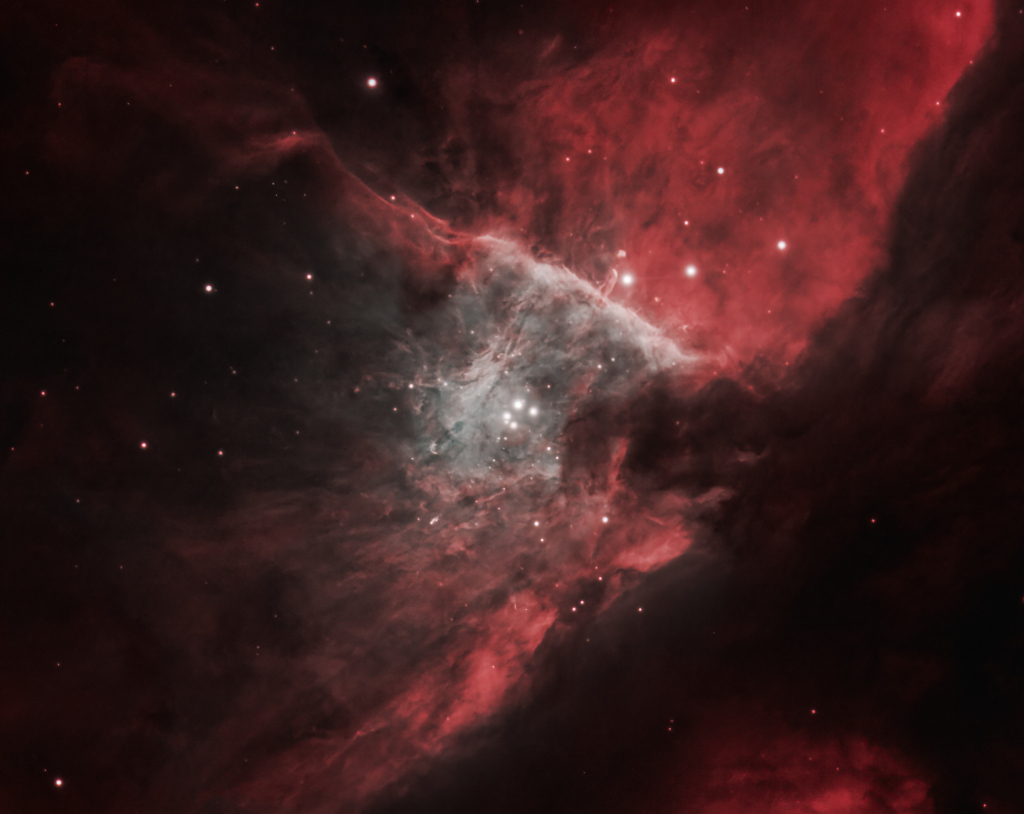2024年1月5日
Trapezium: At the Heart of Orion
Image Credit & Copyright: Fred Zimmer, Telescope Live
Explanation: Near the center of this sharp cosmic portrait, at the heart of the Orion Nebula, are four hot, massive stars known as the Trapezium. Gathered within a region about 1.5 light-years in radius, they dominate the core of the dense Orion Nebula Star Cluster. Ultraviolet ionizing radiation from the Trapezium stars, mostly from the brightest star Theta-1 Orionis C powers the complex star forming region’s entire visible glow. About three million years old, the Orion Nebula Cluster was even more compact in its younger years and a dynamical study indicates that runaway stellar collisions at an earlier age may have formed a black hole with more than 100 times the mass of the Sun. The presence of a black hole within the cluster could explain the observed high velocities of the Trapezium stars. The Orion Nebula’s distance of some 1,500 light-years would make it one of the closest known black holes to planet Earth.
Tomorrow’s picture: snow day
四边形星群: 猎户座大星云的能量核心
影像提供与版权: Fred Zimmer, Telescope Live
说明: 在这张清晰宇宙影像中心附近的猎户座大星云核心区里,有4颗炽热大质量恒星所构成的四边形星群。而聚在半径约1.5光年区域里的这4颗星,更是这个猎户座紧密星团众多恒星中最引人注目的一群。在四边形星群之中,尤其是最明亮的恒星Theta-1 Orionis C,所发出的电离性紫外光,驱动了这个复杂的恒星形成区发出可见辉光。这个稚龄约3百万年的猎户星群,在形成之初时更密集,而最近的一项动力学研究指出,当初失控的恒星碰撞,可能产生了一个质量超过100倍太阳的黑洞。如果此星群内有黑洞,就能解释为何四边形星群成员星的运动会如此快速。猎户座大星云离我们约有1,500光年远,因此此黑洞可能是现知离地球最近的黑洞。 (Trapezium 四边形星群)
明日的图片: light-weekend







